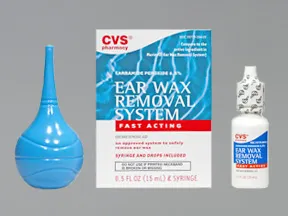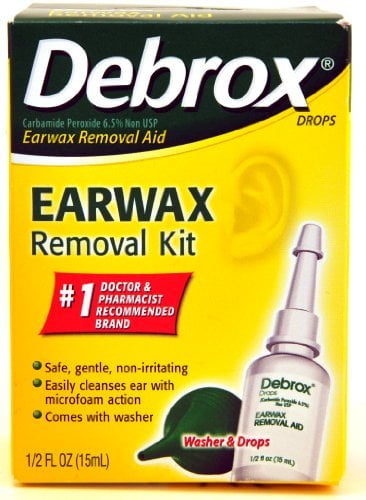
While the typical DIY methods have involved cotton swabs and bobby pins, both can do more harm than good (which we’ll get into below). Christopher Schweitzer, PhD, audiologist and executive director of HEAR 4U International. But now that we have in-ear headphones, ear plugs, and hearing aids, cleaning the ears has become more important, says H. That’s all good and well, assuming you’re not sticking anything into your ears on a regular basis. Chandrasekhar says, the wax itself protects the ear canal from infections. cerumen) on its outer third, which then moves in and out of your ear canal - where it can take any debris or dust with it.
#Ear wax removal kit equate skin
Unlike the skin on the rest of your body, the skin of your ear canal actively creates wax (a.k.a. Chandrasekhar, MD tells PEOPLE, “ears clean themselves.” If you’ve noticed your favorite Taylor Swift playlist sounds a bit muffled or are finding some telltale gunk on your headphones, the best ear-cleaning kits can help you hear better though otolaryngologist Sujana S. files/webfm-uploads/documents/research/nasalirrigationinstructions.Deal Alert: These Are the Best Prime Day Deals Happening Right Now University of Wisconsin department of family medicine nasal irrigation instructions.Saline nasal irrigation for sinus problems.Saline nasal irrigation for upper respiratory conditions. Should I use a neti pot or other nasal irrigation? /blog/should-i-use-a-neti-pot-or-other-nasal-irrigation Nasal irrigation (nasal wash) for common upper respiratory conditions.Neti pot solution: Can I make my own? /diseases-conditions/common-cold/expert-answers/neti-pot-solution/faq-20058402 fda.gov/ForConsumers/ConsumerUpdates/ucm316375.htm Is rinsing your sinuses with neti pots safe? (2017).You can learn more about how we ensure our content is accurate and current by reading our editorial policy. Healthline has strict sourcing guidelines and relies on peer-reviewed studies, academic research institutions, and medical associations. NeilMed Sinus Rinse Pediatric Starter Kit.

If you’ve got younger kids and are looking for an alternative, there are other options for nasal irrigation, including:

Wash the neti pot with hot water and antibacterial soap. Always clean and dry your neti pot after each use.Water that’s lukewarm or room temperature is best for your neti pot. Don’t use water that’s too hot or too cold.If you have a ceramic neti pot, this can last you for years.

Replace your neti pot as often as you replace your toothbrush (so, according to the Centers for Disease Control and Prevention, about every 3 to 4 months for plastic pots) to avoid bacteria and microbe buildup.There are recorded deaths due to an amebic infection after nasal irrigation, so it’s essential to make sure your water is infection-free. Use only distilled water (tap water boiled for several minutes and left to cool to a lukewarm temperature) or completely filtered water.

Here are some tips to help you use the neti pot safely: Neti pots can be a great solution for congestion, but it’s important to exercise caution when trying nasal irrigation.


 0 kommentar(er)
0 kommentar(er)
